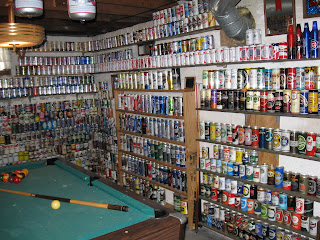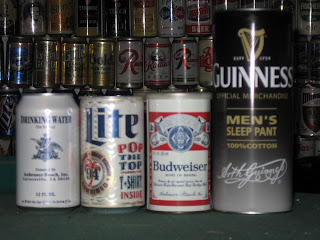Studies have shown that air bags, used in conjunction with lap and shoulder safety belts, can prevent fatalities in the event of automobile crashes. The National Highway Traffic Safety Administration estimates that belt use alone prevents 45% of traffic fatalities, air bag use alone can prevent 13% of fatalities, and combined usage can prevent a full 50% of traffic fatalities.
On July 7, 1984, the Federal Motor Vehicle Safety Standard 288 was issued. This standard required all vehicles manufactured after April 1, 1989 for sale in the United States to be equipped with a driver's side air bag Supplemental Restraint System. This standard was amended in 1998 to require passenger side front seat air bags, with the provision that the passenger side restraint can be depowered, or turned off. The depowering provision is due to studies that showed that people of small stature can be injured or killed by air bag deployments.
Many automobiles now come equipped with multiple air bags, besides the required dual front seat air bag systems. Cars now come equipped with side air bags to protect from side collisions instead of just frontal crashes. I recently saw a TV commercial for a car that comes with 11 air bags, including the industry's first rear air bag!
The air bag requirement has necessitated a change in the way people drive, namely in the methods of steering and the recommended hand positions on the steering wheel. The old hand-over-hand method of steering is no longer recommended because air bag deployment can cause serious injuries to a driver with his/her arms crossed in this fashion. Similarly, the previously recommended hand positions of 10 and 2 o'clock have been amended to 9 and 3 'oclock, also due to the possibility of arm injuries during an air bag deployment.
I studied this issue in detail while in my senior year at Saint Ambrose University when I submitted a term paper for my Seminar in Socio-Economics class in the fall of 1978. The summary of that paper that was distributed to the entire class for discussion follows: (In case you were wondering, I got an "A" on both the paper and the class.)
Passive Restraints - A Cushion of Safety
November 21, 1978
Because of consumerists such as Ralph Nader, and an increasing amount of government regulation, the automobile industry has been practically forced to build safer cars. The result has been not only changes in the structure and design of automobiles, but also the modification of the passenger compartment in order to provide more protection to passengers in the event of an accident. This protection comes in the form of padded dash boards, collapsible steering wheels, and seat belts.
Seat belts are highly effective in preventing fatalities in traffic accidents. However, the National Highway Traffic Safety Administration reports that only 18.5% of all drivers use their safety belts. This low rate of seat belt usage has led safety advocates to push for the production of a different form of passenger protection - the passive restraint. Passive restraints are devices that automatically protect front seat passengers without any action on their part.
There are presently two types of passive restraints: passive belts that automatically strap in front seat passengers when they close the doors; and air bags in the steering wheel and dash board that inflate upon collision to restrain the driver and passenger from striking the steering wheel, dash board, or windshield.
A recent Department of Transportation study indicates that if air bags or passive belts were installed in all cars, 9,000 out of 47,000 fatalities per year could be eliminated. Citing this study, Department of Transportation secretary Brock Adams announced in July of 1977, that the auto makers will be required to install passive restraints in all new large cars beginning in 1982, in all medium sized cars beginning in 1983, and in all small cars beginning in 1984.
Opponents of a passive restraint mandate, including the auto makers, maintain that passive restraints, especially air bags, need to be tested much more thoroughly before they are made mandatory equipment on all cars. Before leaving office in 1976, Adam's predecessor, William T. Coleman proposed a 400,000 car test fleet to gauge the effectiveness of air bags.
Ralph Nader feels that Adam's plan gives the automobile companies too much time. A devout safety advocate, Nader says that air bag installation should begin immediately in all new cars. Other advocates argue that small cars should be equipped with passive restraints before large cars, since small cars are more vulnerable in crashes.
Adam's mandate gives the auto makers a choice between passive belts and air bags. Since air bags are concealed in the steering wheel and dash board, they don't restrict movement or feel uncomfortable as is the case with passive belts. However, the cost of passive belts is much less than that of air bags. The Department of Transportation estimates that the cost of installing passive belts will be $25 per car as opposed the $112 per car for air bags.
The passive restraint requirement, therefore, raises many questions. Is data on air bag effectiveness sufficient to warrant a mandate or should air bag research be continued? Would passive belts be better than air bags? Should more emphasis be placed on current seat belt systems, even to the point of seat belt laws requiring that drivers and passengers use their seat belts? How does the cost of a passive belt system compare with the cost of an air bag system?
Because of current low seat belt usage, a passive restraint mandate is necessary. However, wishing to avoid a situation like that caused by the 1973 Ignition-Interlock law, which required domestic automobile companies to build cars so that they could not be started unless front seat passengers buckled their safety belts, and which was met with tremendous public rejection and subsequently repealed, the auto makers will probably focus their attention on air bags.
Since air bags aren't as restrictive as passive belts, and will at least offer some form of protection to those that refuse to use seat belts, installation of air bags along Adam's timetable is a must. Allowing the automobile companies until 1982 before they must install passive restraints eliminates the need to redesign automobiles for air bags before they would normally be redesigned. The three year phase-in time for small cars is necessary because air bag systems for small cars are more difficult to design and engineer than for large cars. The lives that air bags will save are more than worth the higher costs of the systems.
Sources:
"Safe at Any Speed?'
Newsweek Magazine, September 7, 1970
"Air Bags: The pressure Is On" by Fred M. H. Gregory
Motor Trend Magazine, October 1974
"The Air Bag: Still Blowin In the Wind" by Fred M. H. Gregory
Motor Trend Magazine, October 1976
"Punching the Air Bag Around" by Ted Orme
Motor Trend Magazine, November 1976
"Air Bags: A Non-Decision" by Ted Orme
Motor Trend Magazine, March 1977
"Adams and the Bag"
Newsweek Magazine, July 11, 1977
"The Half-Safe Car"
The Wall Street Journal, July 20, 1977
"Green Light For Air Bags if Congress Goes Along"
Consumer Reports, September 1977
"Are Air Bags Worth the Trouble? - interviews with Joan Claybrook and Bud Schuster"
U.S. News and World Report, September 26, 1977
"Safety With a Bang" by M. Jordan
Car and Driver Magazine, November 1977
"Ralph's Wrath"
Newsweek Magazine, December 12, 1977
"Air Bag Anti-Climax" by Ted Orme
Motor Trend Magazine, January 1978
"The Quick, The Dead, and The Cadaver Population" by N. Wade
Science Magazine, March 31, 1978
"Seat Belt Usage" by Tony Hogg
Road and Track Magazine, April 1978
"A Conversation With Joan Claybrook" interviewed by Ted Orme
Motor Trend Magazine, August 1978
"How Effective In Preventing Injury Are Safety Belts and Air Bags?"
Road Injury Prevention & Litigation Journal, September 2, 1997
"Seat Belt Laws"
http://www.ghsa.org/html/stateinfo/laws/seatbelt_laws.html September 2012
"The History of Air Bags"












































